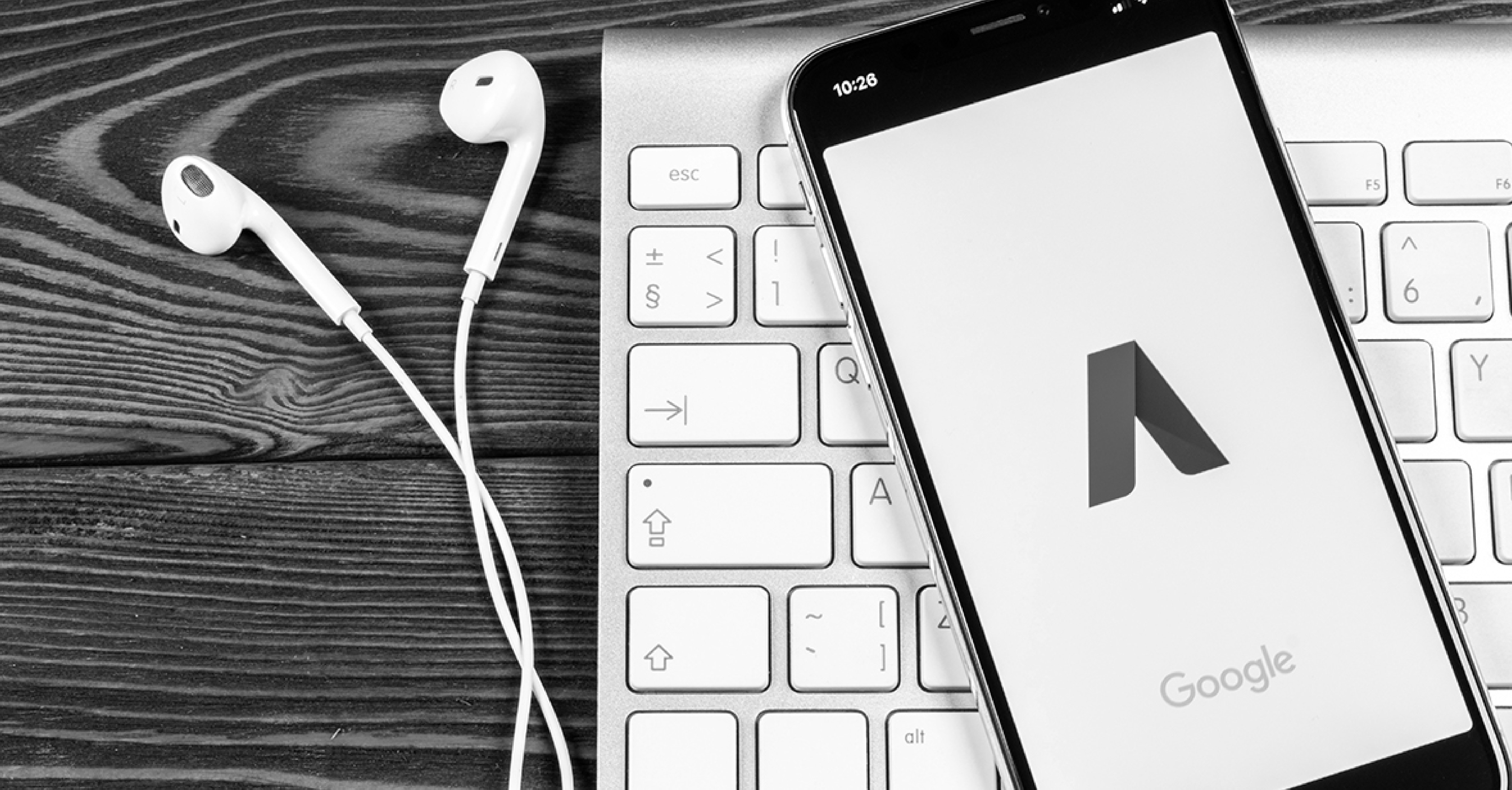BLOG Google Ads vs Social Ads: Which is right for your business?
Google Ads vs Social Ads: Which is right for your business?
POSTED BY Primitive | Sep 9, 2020

Many new business owners and entrepreneurs view advertisements as a one-size-fits-all template that only pertains to social channels. And, as a former small business owner myself, I’d be lying if I didn’t admit this happened to align with my thought process as well.
Whatever campaign graphics I created in Canva were posted on my Facebook and Instagram pages, and then shared amongst my employees and, hopefully, clients.
Although my intentions were well-meaning and, at the very least on track with my business objectives, I was only accomplishing social media marketing and not paid social ads which has proven far more effective.
Also unbeknownst to me at the time, the world of online advertising goes far beyond social and well into the realm of the almighty behemoth known as Google.
So, how do you determine which type of ads serves your business the best? Let’s find out.
What’s the difference between Google Ads and Social Ads?
Although there are definite similarities between the two platforms, such as both being on the internet, let’s take a moment to dissect the differences.
Google Ads (paid search)
Google Ads (formerly known as Google AdWords) is the “king" of PPC advertising.
As the most popular search engine in the world, Google processes an estimated 5.8 billion searches per day. That search volume alone provides Google Ad users an unprecedented number of audience members/prospects who are potentially looking for their products and services.
One of the most common misconceptions about Google Ads is that in order to thrive on the search engines, you need to have a robust budget. Although certain keywords can cost a few pennies more than others (think the technology and financial sectors), Google has frequently improved their algorithms to favor the quality and relevance of the content, and in this case the ad, over anything else.
Google Ads also goes far beyond simple text-based advertising. Although once the standard format, Google Ads have quickly evolved into a format that can be highly tailored to their respective industries.
For example, hotel advertisements are now equipped with the capabilities to include high resolution images, social proof (testimonials, reviews, and user photos), maps, and more.
The business will pay for keywords they believe their buyer personas search for in their Google queries, and every time those keywords are utilized, their ad will pop up. Once a searcher clicks on a company’s ad, the business will be charged a small fee, hence the name “pay-per-click.”
Essentially, Google Ads helps potential customers find your business based on specific keywords that are searched in Google.
Social Ads (paid social)

Advertising on social channels can be a very lucrative aspect of many small business marketing strategies. After all, operating a business page on many social platforms (Facebook and Instagram, for example) is free and provides a direct line to engage with your organization’s specific buyer personas.
Like Google, social platforms have the ability to attract a large number of MAUs (monthly active users) with Facebook reigning supreme at a whopping average 2.603 billion MAUs.
Out of those billions of users, many people use social media as a more publicized window into the details of their lives (friends, hobbies, marriages, etc) and behaviors. This provides an opportunity to target your ads based on specific details from your buyer personas. There is also the option to reach similar platform users by way of lookalike audiences. These audiences are similar to your current customers and are more likely to purchase your products.
Another difference between Google Ads and Social Ads is that the latter is considered vastly more visual than the former. With high-quality graphics, gifs, videos and mixed media proving to attract, engage, and delight many audience members (while also proving a large ROI), Social Ads are the perfect platform to showcase your company’s creative ingenuity.
Essentially, the difference between Google Ads and Social Ads largely remains that those who find your business via social channels are finding you through interests and behaviors, and not specific keywords.
When should you use Google Ads and Social Ads?
Alright. Now that we’ve gotten the differences between the two platforms out of the way, let’s talk about the “when” behind both.
Well, it depends on your goals and your budget.
In order to determine when you should use either, or both, you need to ask yourself the following questions:
What is my objective? What am I looking to achieve?
If your answers are:
- Broadening my business base and building brand awareness? Social Ads
- Selling products directly to consumers? Both
- Obtaining more qualified leads, business consultations, and sales? Google Ads
Maximizing your results
Once you’ve narrowed down the best platform (or platforms) respective of your goals and objectives, it’s time to maximize your output by following a few best practices.
Luckily, we’ve highlighted them here.
Google Ads
- Stay informed of Google updates - For example, when Google Ads expanded text ads, it became critical to be aware that your PPC ads would now have more room to communicate messaging to prospects.
- Budget - Know how much you’re willing to bid for a keyword click.
- Understand your Quality Score - As stated above, Google values, heavily, the quality and relevance of your ad. Knowing how Google determines your score can help you improve the efficacy of your ad without breaking the bank.
- Keep an eye on your metrics - One of the great things about Google Ads is that you’re provided data on your campaign performance. Know what metrics are important for you and make sure you’re tracking them to better understand how well your ads are doing, or if your organization needs to pivot.
- Define your audience - Making sure your ads come up when your desired audience is searching on Google is key.
- Keywords. Keywords. Keywords - Choosing keywords with the right volume and competition is vital to the success of your campaign.
- Get creative - Create ads that are both concise and creative, and make sure not to neglect eye-catching CTAs.
- Responsive design - We all know mobile devices are becoming the new desktops, so make sure your ads are functional and beautiful across all screens.
You can read a more in-depth synopsis about best practices for Google Ads here.
Social Ads
A lot of the best practices that are defined for Google Ads are interchangeable with your Social Ads as well. But for the sake of ease, let’s break them down.
- Define your target audience - Demographic information is HUGE and will determine a lot of critical information about your Social Ads that can either yield success, or failure.
- Choose the right platform - Based on the demographic information you’ve acquired, you can route your ad to the platform that will target your audience.
- Stay informed of platform updates - Many social channels will publicly release their updates, making it easy to be “in the know.” For example, Instagram now allows viewers to purchase products from checkout-enabled businesses through the Instagram Live feature.
- Content is key - Nailing down your tone by way of high-quality copy and media serves to enhance your brand image and voice.
- Monitor your metrics - If you don’t know how well your ads are doing, you can’t determine the ROI. Viewing clicks on an ad, for example, can show you one side of the story, while viewing clicks, views, and conversions can show you a much more comprehensive picture.
- Ad fatigue is real - Create multiple versions of the same ad to prevent ad fatigue.
How much to budget for your ads
Alright, let’s get down to the nitty gritty.
Just how much should you be budgeting for your advertisements?
While statistics show that many marketers are spending 8-16% of their total revenue on digital advertising, it really depends on a couple of factors such as the analytics you’ve captured and the maximum ad budget you’re allotting for ads. Luckily, none of those factors involve arbitrarily choosing a number from the sky and hoping for the best.
While there’s no set amount you should spend, budgeting your ad spend should be considered an investment vs an expense, and many businesses most likely won’t benefit from a $5/day investment.
If you’re just starting out, HubSpot recommends starting with 10% of your total marketing budget, in order to still be competitive while also gathering the adequate data to help you clearly see what kind of return on investment your business can expect.
Still not sure where to start when allocating your budget? This HubSpot calculator is a great resource to get the ball rolling.
Whether your business chooses paid search (Google Ads) or paid social (Social Ads), your company is opting into utilizing a powerful advertising platform that has proven, time and time again, to be extremely effective.
To learn more about how a comprehensive content marketing strategy works and can benefit your business, book your free consultation with Primitive today.
SHARE THIS POST:

About the writer, Primitive
The team behind On the Dot. is made up of creatives, strategists, and developers who give a damn. At Primitive, we craft digital solutions that help businesses grow from brand to backend. Every insight we share is backed by strategy, driven by results, and built to move your business forward.